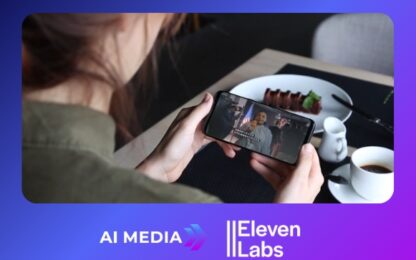
Closed Captioning: A Guide by Ai-Media – Part 2
Closed Captioning: A Guide by Ai-Media – Part 2
As closed captions grow in popularity, and for many great reasons, we’re taking a step back to let you know what captions are, how they work, and most importantly, what they can do for you.
If you missed Part 1 of our simple closed captioning guide, we recommend you read that first!
In Part 2, we explore types of captions, captioning vs. subtitles – what’s the difference? – how captions are made, and differences in quality.
Types of Captions and What They Offer
Captioning comes in several different forms. The type or format to be used will depend on the situation and needs.
Closed Captions
Closed captions are the most common form of captioning. They are identified by the CC symbol.
Closed captions give the user control as they can be toggled on or off. The captions are created as a separate file which plays as a layer alongside the video. Users can choose between a range of file formats to suit the desired platform.
Open Captions
The main difference with open captions is that they are ‘burned on’ to the video. This means they are always present when the video is played, and the viewer does not have to switch anything on to see them.
Live Captions (CART)
CART stands for Communication Access Real-Time Translation, a service that delivers live captions remotely to almost any screen – computers, projector screens, tablets or smartphones. These captions can be displayed as a full screen of text in real-time, or embedded within presentations or videos.
What’s the Difference Between Subtitles and Captioning?
A common misconception is that subtitles are the same as captions.
Let’s break down the key differences and forms of captioning available to choose from.
Subtitles are used to translate language and are often used in foreign films and programs. They assume the viewer can hear the audio, and as a result, usually do not contain background sounds or notifications for speaker changes.
Captioning, on the other hand, is displayed in the same language as the dialogue in the video, and represents all the audio, including non-speech elements like noises and music.
How Are Captions Made?
One myth about captions is that all captions are made by a computer.
Computer-generated captions do exist – made through Automatic Speech Recognition (ASR) technology – and they certainly play their part in creating global accessibility. However, the best-quality captions are made by humans!
These are the two main methods used by human captioners to create captions.
Respeaking
A respeaker listens to an audio feed from the video, meeting or live event and re-speaks the dialogue as they hear it. Repeating what they hear into voice recognition software, complete with punctuation, grammar, and other formatting instructions.
From there, a computer translates this into the text you see on screen. The goal is to make sure the captions are clear, accurate and accessible for the viewer, with as little delay as possible and without distracting too much from what’s happening on screen.
Stenocaptioning
Stenocaptioners are trained to use a special shorthand keyboard to type out dialogue in real time, sometimes working at over 300 words per minute. With their specially adapted keyboard, a stenocaptioner can spell out a whole syllable or word with a single keystroke. Like respeakers, stenocaptioners consider line positioning, speaker changes and more.
Captioning live content adds another layer of difficulty. Live captioners don’t have the option to pause or rewind, which means they must keep up with the speaker/s and correct any mistakes with a minimal time delay.
When it comes to the delivery of your captions, it’s important to note that what you are receiving is a caption file, not a video. Closed captions are added as a separate file to recorded video, meetings, or live streams.
If you want to understand more about this, speak to one of our friendly team members!
The Importance of Quality
Accuracy of captions is critical for those who rely on them, and the industry standard of 99% is measured across punctuation, grammar and spelling. Ai-Media’s captioning quality averages an excellent 99.6%.
Just a small error can be very confusing and misleading for a viewer, and a misplaced comma can completely change the meaning of a sentence.
Thought goes into the ‘blocking’ of captions – how the words are split up into rows on screen. With a focus on keeping chunks of meaningful information together rather than spreading sentences across multiple lines.
The ‘positioning’ of where the captions are displayed is important and is adjusted to ensure graphics on screen are not covered, nor the mouths of those speaking.
The length that captions appear on screen for is calculated as a ‘reading rate’ and is set to allow the viewer enough time to read them whilst also ensuring they are timed to accurately represent what is said and heard, as it happens.
You may have noticed captions sometimes have different ‘colors’ – these are used to indicate who is speaking, which is particularly important if a character is off-screen. Dashes can also be used to represent a change of speaker, both critical details that allow the viewer to know who is saying what and when.
Continuity is really important, and good quality captions will be seamless for the viewer to read across the whole program.
How to Get Closed Captions Added to Your Content
Want captioning services? You’re in luck. Ai-Media is a captioning, transcription and translation company, operating across the world!
We provide captioning services for any content you can think of, whether that be online work or social meetings, school or university classes, online or in-person events, recorded videos, broadcast media, live streams or personal appointments.
Just get in touch to speak to our friendly team and order on of our many services!


